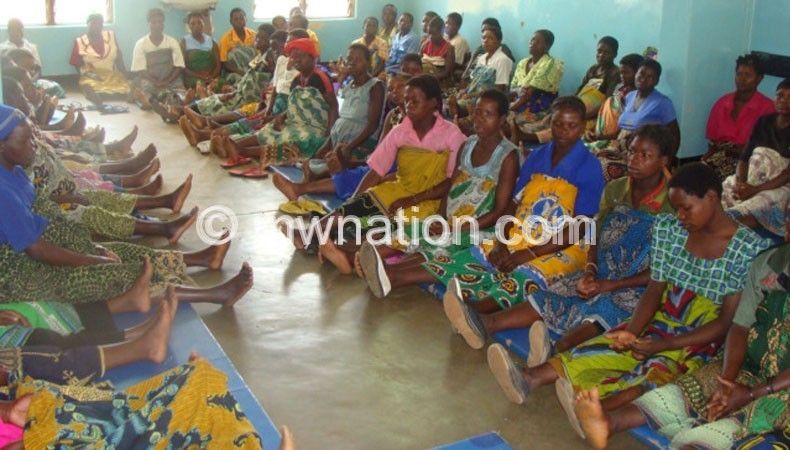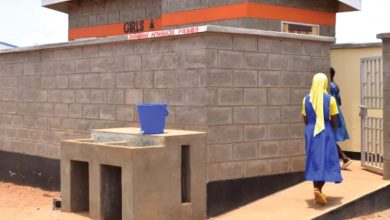When health policies remain paperwork
Enala Zimba, 27, spends K3 000 (US$7) each time she wants to access antenatal care from either Mtuzuzu or Mabiri health centres in Mzimba, about 30 kilometres away.
Yet, about four kilometres from Kamundenga Village, her home, lies Kapopo Health Centre. The health facility was constructed about four years ago, but government has not yet deployed staff to run it.
Thus, expectant women from sub-Traditional Authority (S-T/A) Mlhanga are required to hire kabaza (bicycle taxis) to access healthcare services at Mabiri or Mtuzuzu.
“When there is no money, we cannot go,” Zimba explains.
According to the 2010 Malawi Demographic Health Survey (DHS), only 69 percent of births to women in rural areas are attended to by a skilled attendant compared to 84 percent of births to urban women. This leads to deaths of women and adolescent girls due to childbirth complications.
In the draft estimates of expenditure on recurrent and capital budget for the financial year 2014/15, government committed itself to the improvement of equity and efficiency in the delivery of quality health package (EHP) services.
Last year, Minister of Health Dr. Jean Kalilani said government would do this by, among others, supporting and strengthening infrastructure development of the health system.
She said in the year ending June 30 2015, government would rehabilitate and upgrade 825 health centres across the country in an effort to increase coverage of EHP services and improve access through development of infrastructure.
However, as government is about to wind up the 2014/15 budget, only 20 percent of the work is done, according to the draft estimates.
Malawi Health Equity Network (Mhen) executive director Martha Kwataine says this shows that government is not living up to its promise.
She argues that some of the maternal deaths Malawi registers are avoidable as interventions to prevent or manage most common complications are known.
According to the health rights activist, complications such as severe bleeding, infections, high blood pressure during pregnancy and unsafe abortion can be detected, prevented or treated during antenatal visits with trained health workers.
But Kwataine notes that the long distances expectant and/or lactating women cover, coupled with lack of money continues to hinder them from accessing healthcare, particularly in low-income settings.
“Despite the perceived benefits of antenatal and postnatal care for both the mother and child, the number of women accessing these services remains unimpressive, particularly in low-income settings,” says Kwataine.
She challenges authorities at Capital Hill to start translating policies into action.
But National Initiative for Civic Education (Nice) area civic education coordinator (Acec) for Embangweni bloc, John Kayitchaye, believes there could be a misalignment between principles that underpin provision of antenatal care and the economic contexts of pregnant women in low-income areas.
Kayitchaye says this could mean even high-quality antenatal care may not be used by some pregnant women because government has failed to address their transportation problems.
“It is, in fact, disheartening that despite huge international efforts to promote and provide antenatal care, there has been little improvement, particularly in the low-income settings. And if government is not keen to address factors hindering use of the service, we are doomed to have the status for the next decades,” warns Kayitchaye.
He recommends that government should establish causes of poor antenatal attendance. He also asks authorities to seek views from users of antenatal care so that their interventions should have an impact.
Kwataine notes that it is equally disappointing to note that despite international and national efforts to promote and provide antenatal care, government commitment has not translated into significant improvement of the situation on the ground.
Kalilani acknowledges the existence of myriad challenges in the health sector, including shortage of staff, perennial drug stock outs and acute shortage of health facilities, among others.
But the minister says even as Parliament is set to discuss and pass the 2015/16 budget, people should not expect much from it because government will give priority to projects which stalled over the years.
However, Kalilani said government will continue trying within its means to resolve some of the challenges in the provision of antenatal and postnatal care in line with United Nations Millennium Development Goal (MDG) Five on reducing maternal mortality ratio by three quarters by 2015.
The World Health Organisation (WHO) emphasises this can easily be achieved if pregnant women observe a minimum of four antenatal visits per pregnancy.
Zimba—currently breastfeeding her sixth child—believes four antenatal visits per pregnancy could not have been a big problem if government provided staff for their local health centre.
She points out that common reasons for failure or delayed initiation of antenatal attendance is to avoid making several visits, thereby incurring more costs.
She adds that the situation becomes more disappointing when pregnant women are let down by recurrent shortage or total lack of resources in these facilities.
Zimba, therefore, challenges authorities at Capital Hill to take a serious approach to reducing maternal mortality in the country.




